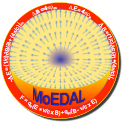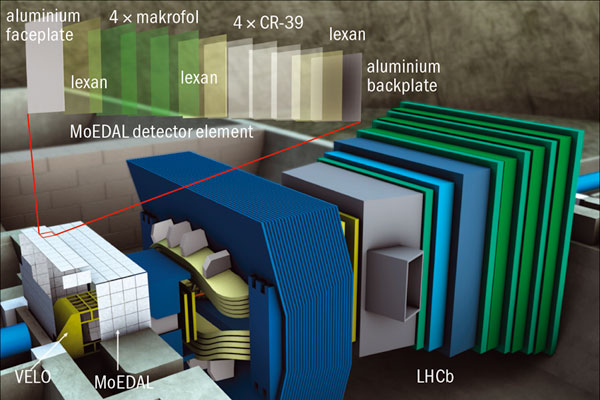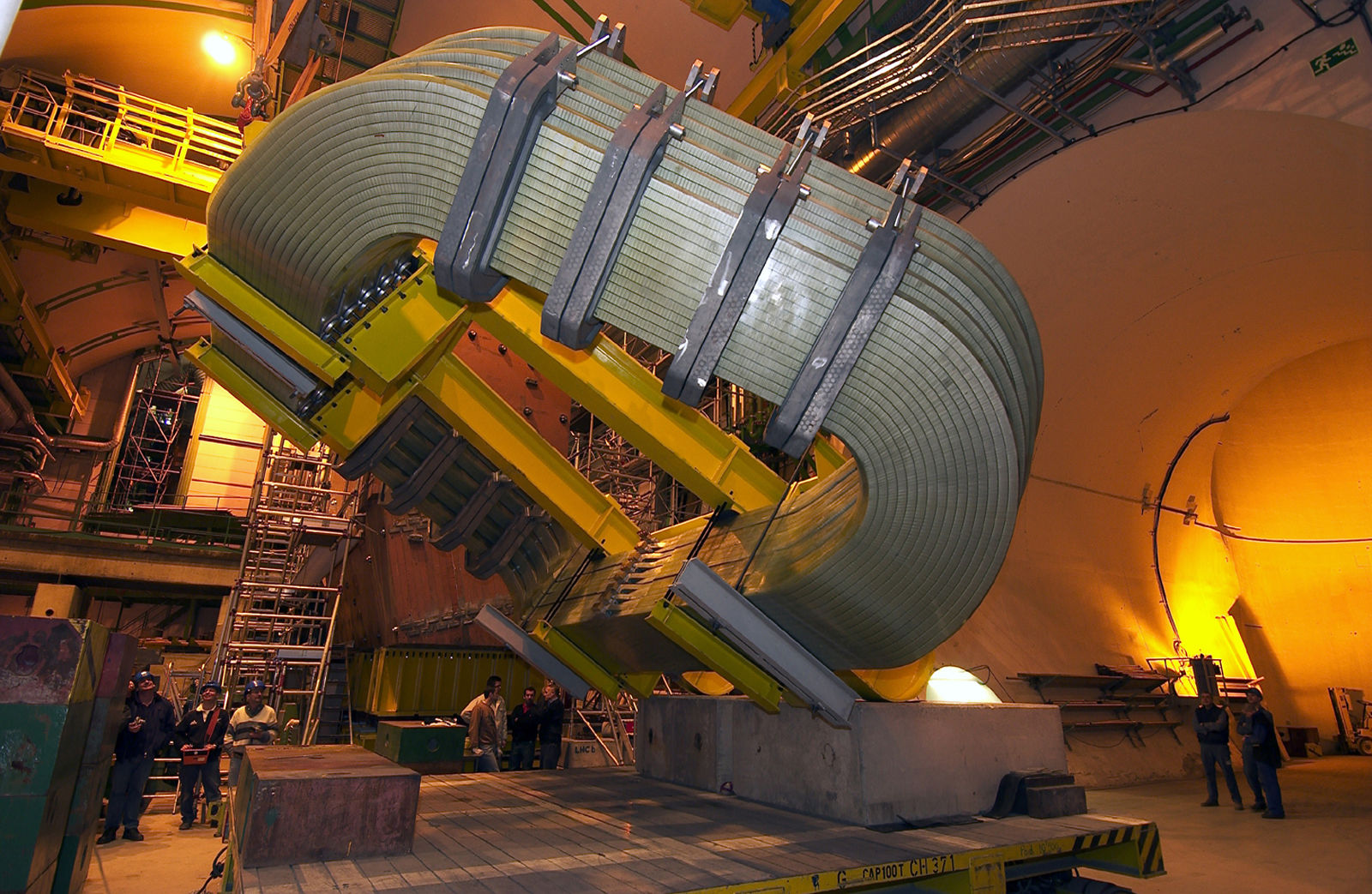Taking a closer look at LHC
|
MoEDAL (the Monopole and Exotics Detector At the LHC) is an experiments that investigate particle collisions at the Large Hadron Collider to search for very specific exotic particles that would indicate new physics beyond the Standard Model, such as magnetic monopole, dyons, Q-balls, black-hole remnants, multiply charged particles and High-electric-charge compact objects (HECOs). If exotic theoretical particles exist, they could be formed in collisions at the LHC. Such particles would create a tiny trail as they traverse the MoEDAL detector, breaking long-chain molecules in the plastic NTD stacks. MoEDAL researchers use ultra-fast scanning microscopes to scan the NTD sheets to look for such trails, as well as analysing the trapping volumes for the presence of trapped particles |
 |
The experiment is relatively small, cheap and quick to install but its physics potential is huge. The MoEDAL detector consist of layers of plastic attached to the walls and ceiling of the cavern that houses the VELO detector of the LHCb experiment.

The international MoEDAL collaboration, made up of physicists from Canada, CERN, the Czech Republic, Germany, Italy, Romania and the US. The full detector inititally comprises an array of approximately 400 nuclear track detectors (NTDs). Each NTD consists of a 10-layer stack of plastic and altogether they have a total surface area of 250 m2.
In preparation for data taking during run 3 of the LHC, the MoEDAL detector was upgraded to MoEDAL-MAPP. The addition detector, MAPP (MoEDAL Apparatus for Penetrating Particles), was approved in 2021 to extend MoEDAL’s physics reach by providing sensitivity to milli-charged particles and long-lived exotic particles.
Some results can be found here:
2024 - MoEDAL search in the CMS beam pipe for magnetic monopoles produced via the Schwinger effect.
|
AUTHORS Xabier Cid Vidal, PhD in experimental Particle Physics for Santiago University (USC). Research Fellow in experimental Particle Physics at CERN from January 2013 to Decembre 2015. He was until 2022 linked to the Department of Particle Physics of the USC as a "Juan de La Cierva", "Ramon y Cajal" fellow (Spanish Postdoctoral Senior Grants), and Associate Professor. Since 2023 is Senior Lecturer in that Department.(ORCID). Ramon Cid Manzano, until his retirement in 2020 was secondary school Physics Teacher at IES de SAR (Santiago - Spain), and part-time Lecturer (Profesor Asociado) in Faculty of Education at the University of Santiago (Spain). He has a Degree in Physics and a Degree in Chemistry, and he is PhD for Santiago University (USC) (ORCID). |
CERN CERN Experimental Physics Department CERN and the Environment |
LHC |
IMPORTANT NOTICE
For the bibliography used when writing this Section please go to the References Section
© Xabier Cid Vidal & Ramon Cid - rcid@lhc-closer.es | SANTIAGO (SPAIN) |



